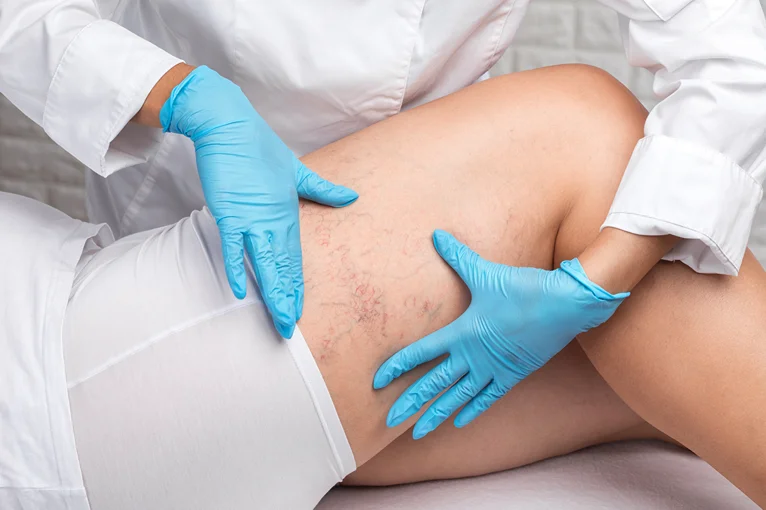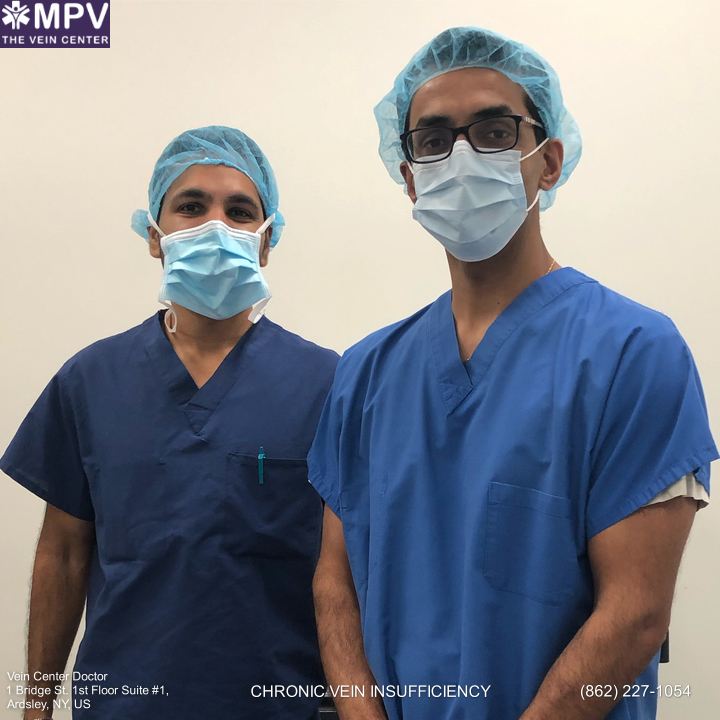It's really worrisome when more signs and symptoms of a disease can be seen because you might get the impression that the disease is becoming worse. It's then helpful to know what to prepare for once you contract a certain disease so you'll also know if it's anything serious. In the case of chronic venous insufficiency, there might be certain effects on the skin like bruising that it most probably contributes to.
So can chronic venous insufficiency cause bruising? Chronic venous insufficiency may manifest as a bruise-like skin change called hemosiderin staining. It's not bruising per se but is due to the failure of leukocytes to clear up iron byproducts in the leakage of blood from the blood vessels. Bruising may also occur as a side effect of the management procedures for chronic venous insufficiency.
Living with unwanted veins is a thing of the past, when you can simply schedule a free consultation with Vein Center Doctor and find your ideal solution today.
It's a common condition that affected legs, ankles, or feet may appear bruised in chronic venous insufficiency. However, this isn't really bruising per se, but only a skin discoloration called hemosiderin staining. This is due to the leakage of blood from the blood vessels, bringing with them byproducts like iron, which can leave a stain if the white blood cells fail to clear them up completely.
Hemosiderin staining is just one of the clinical manifestations of chronic venous insufficiency, a venous disease that encompasses clinical manifestations not only in the damaged veins but in the skin as well. Other common symptoms of chronic venous insufficiency include the following:
Complications associated with chronic venous insufficiency are usually brought by poor blood circulation and impairments in clotting functions, which include the following:

Diagnosis of chronic venous insufficiency includes careful history taking to determine the risk factors that a patient may possess, like a family history of vascular disease. It also includes a physical examination where the signs and symptoms of chronic venous insufficiency are observed.
These may also be complemented with non-invasive procedures such as the following:
If the non-invasive procedures for testing aren't enough or if surgical treatments are warranted, invasive procedures may also be employed. These include the following:
The management of chronic venous insufficiency entails symptomatic relief. Ways employed by medical professionals in treating chronic venous insufficiency include conservative treatments and interventional procedures.
Conservative procedures include lifestyle modification such as regular exercise to maintain the patient's weight within the ideal range, as obesity is one of the risk factors of chronic venous insufficiency.
Pharmacologic procedures are also included, where symptomatic relief of clinical manifestations is done through the administration of medications like diuretics for edema and antibiotics for skin infections.
Wound care and skincare may also be done for chronic venous ulcers and skin changes associated with chronic venous insufficiency.
Interventional procedures include outpatient vein treatments and surgical procedures. Surgical procedures include the following:
Find exactly what you need to get rid of your vein-related problems. Dr. Sood and the rest of our team at Vein Center Doctor are ready to help: schedule your free consultation today.
At Vein Center Doctor, we strive to help our patients return to their usual activities as soon as possible through our high-quality procedures complemented by the expertise of our team of healthcare providers headed by the vascular specialist Dr. Rahul Sood. These outpatient vein treatments include the following:
Radiofrequency ablation entails the delivery of radiofrequency energy using a heat-tipped catheter to inflict damage to the vein wall. This causes the closure of the target vein and the flow of blood to be redirected to more functional leg veins. It involves the use of local anesthesia to numb the area to be catheterized and an ultrasound scan to visualize it.
This, however, can't be done on small dilated veins where catheterization is impossible, like spider veins and reticular veins. Moreover, typical complications associated with this procedure include burns, bruising, infection, and superficial thrombophlebitis.
Endovenous laser therapy is the same as radiofrequency ablation where a catheter is advanced up to the saphenofemoral junction of the target vein to deliver laser energy. This also causes the closure of the target vein and the blood flow to be transferred to healthy veins. It also involves the use of local anesthesia and ultrasound scan.
Similar to radiofrequency ablation, it also can't be done to dilated veins of small diameters. Typical complications include bruising, hyperpigmentation, superficial thrombophlebitis, and cutaneous paresthesias.
Sclerotherapy is the method of choice for dilated veins with small diameters like spider veins and reticular veins. It involves the delivery of chemicals called sclerosing agents, typically hypertonic saline, to close off the veins through irritation of the vein wall.
It may be administered in the form of liquid or foam, with foam injections being the more effective but more painful procedure.
Complications associated with sclerotherapy include hyperpigmentation, superficial thrombophlebitis, and deep vein thrombosis. This can't be done to patients who are breastfeeding, pregnant, or with allergies to the sclerosing agent used.
The VenaSeal closure system is one of the minimally-invasive treatments for chronic venous insufficiency. It doesn't require anesthesia but it also entails ultrasound guidance for visualization of the catheter when inserted into the target vein.
This procedure involves flushing the vein with saline solution before the delivery of the VenaSeal adhesive. Delivery is done in a patterned fashion, with pressing the trigger for 3 seconds to deliver 1 cc of the VenaSeal adhesive and compressing the area for 3 minutes as the alternating procedures. These are repeated until all of the target veins are covered.
Compression therapy is considered to be the standard of care for chronic venous insufficiency, especially in venous ulcers. It's a mechanical intervention where compression garments, inelastic short-stretch bandages, and intermittent pneumatic compression pumps deliver graded pressure suitable for addressing the symptoms and clinical severity of chronic venous insufficiency.
Issues surrounding compression therapy, however, include patient compliance and complications like ischemic ulceration and compression ulcers.

Chronic venous insufficiency may cause a bruise-like skin discoloration called hemosiderin staining. The true bruising associated with chronic venous insufficiency is a complication of the interventional procedures to manage the symptoms of this vein disease.
At Vein Center Doctor, we're headed by the vein specialist Dr. Rahul Sood to provide quality outpatient vein care to help manage your vein problems. We handle multiple vein problems and use the latest and most innovative technologies to treat your faulty veins. Visit your nearest vein treatment center or contact us today at 1-862-500-4747 for your free consultation.
Find exactly what you need to get rid of your vein-related problems. Dr. Sood and the rest of our team at Vein Center Doctor are ready to help: schedule your free consultation today.
Most Insurance is accepted for treatment